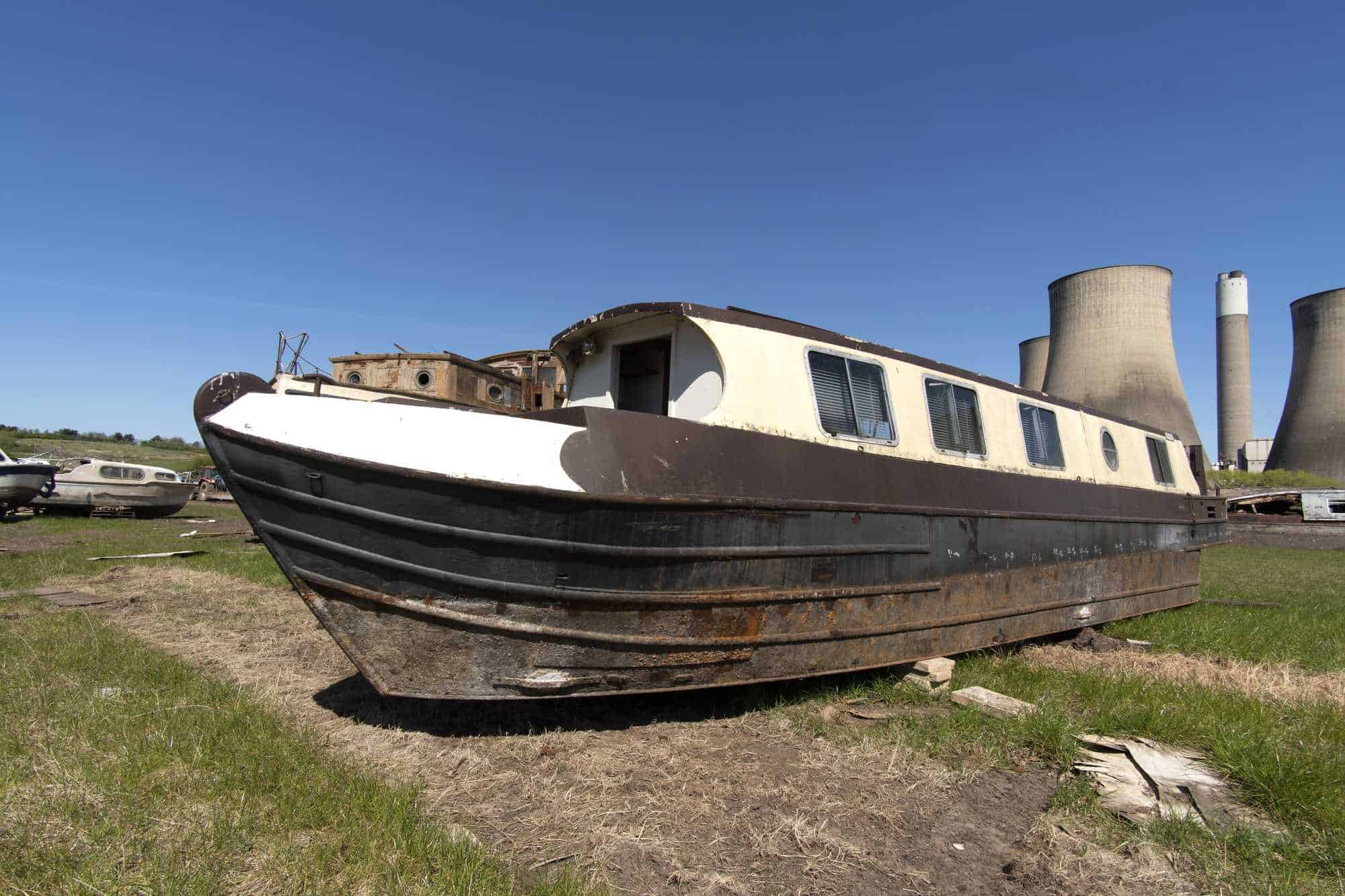Like you would perform regular maintenance on a car, motorbike, or anything with a motorised engine, a narrowboat is precisely the same. As narrowboat owners, whether you live on them or not, it’s crucial to be aware of how often you should black your canal boat. But how regularly should you do this?
Knowing how often you should black your canal boat depends on the coating that was previously applied. With your standard bitumen coating, this should be re-applied every 2-3 years. However, if it was formerly coated with two-pack epoxy, this will need re-coating every 5-6 years.
As you can see from the above, it really depends on what coating your canal boat previously had. This is because the two-pack epoxy cannot be applied over the bitumen paint. If you want to go down this route, you’ll need to get your entire hull stripped and sanded, then apply the two-pack epoxy.
Either way, bitumen or not, they can last a relatively long time before they need to be pulled out of the water and re-applied. If you’re unsure whether or not to use bitumen or two-pack epoxy, below we go into detail of which one we think is better.
Why Do You Black A Canal Boat?
Before we get into the best blacking method, let’s first understand why you black a canal boat. This way, you’ll understand the importance of regularly getting your hull blacked.
The hull is blacked to shield the bottom section of the boat. Typically, a vessel will be blacked from the waterline to the underside of the hull. Canal boats go through a “blacking” process for the following reasons:
- Rust protection
- Rubbing protection (locks, boats, banks, etc.)
- Reduces Pitting
Think of it as an additional layer of your boat, something that protects the structural integrity of anything underwater level. Just like owning any motorised vehicle, you need to provide it with frequent maintenance to prolong their lives. This is the same for narrowboats, and one of the upkeep jobs is blacking.
However, it would help if you didn’t attempt to black your canal boat yourself. Although it seems like a simple task, it really isn’t if you don’t have the appropriate equipment. To successfully perform a boat “blacking”, it’ll need to come out of the water for a few days. Apart from that, it’s most definitely not a job that you’ll want to mess up.
The places a narrowboat are most likely to corrode and rust are on the waterline, so this is one of the prime areas to black. Some people don’t even black the flat bottom of their narrowboats as they feel corrosion is so unlikely down there (due to lack of oxygen). This is a matter of personal choice.
You may also think that blacking is not necessary if you are moored up in a marina and not on the move. Actually, being sat alongside other narrowboats can speed up corrosion due to the electrical current being passed from the boat’s electrical systems. So even if you are moored up all the time, you still need to get blacked!
Best Way to Black A Narrowboat
When you want to get your narrowboat re-blacked, you’re greeted with two options. These will either be black bitumen paint or a black two pack epoxy. Both are well-known in the industry and are adequate enough to protect your narrowboat.
Bitumen
The most inexpensive coating is bitumen paint. This coating can be applied on boats that have either previously had a bitumen or two-pack coating.
(NOTE – You cannot apply two-pack over bitumen)
Because it’s the cheapest option, of course, it needs to be applied more frequently than the two-pack. Here you’ll need to get this re-applied every 2-3 years to ensure your narrowboat has complete protection. To get your boat blacked with bitumen, it should only take around five days,
Two-pack epoxy
Now onto your more “premium” option, and this is the two-pack epoxy. This coating can be a whopping 4-10 times more expensive than the bitumen option, but it lasts twice as long and can withstand much more.
TIP – For the best results, it’s recommended that you use the same brand two-pack you previously had. If not, an estimated guess is also acceptable. People within the industry have just seen much better results using the same branded epoxy.
Which one should you choose?
Choosing depends on several factors, your budget and the original coating on the boat. If you’ve previously had bitumen layered on your hull, the process will be costly to get two pack applied. This is because they’ll need to “shot blast” the bitumen before they even consider layering it with the two-pack.
So, if you’ve got bitumen, I would stick with it unless your budget allows you to transfer over to two-pack. I would urge everyone to make a move to two-pack, but again, it really depends on how much you’re willing to spend on your boat.
How the Boat Blacking Process Works
If you’re like me and like to know everything, you probably want to understand how the blacking process works. It’s pretty simple, but as you can imagine, trying to lug around a boat isn’t. With most blacking services, it’ll take around three days. Here’s how the days will look like:
Day 1
The day your boat is scheduled for the blacking process, it’ll first need to be taken out of the water. Usually, this is by a trailer, but companies also have access to a crane in some cases. Once removed from the water, they’ll start to eliminate the old blacking by pressure washing it. This will also remove any debris, weeds, rust, or mud to ensure they have a smooth surface to begin blacking. It is wise to do rust treatment at this point before re-blacking. If you find any holes, these will need to be welded up first too.
Day 2
After being prepared on day one, they’ll double-check to see if it’s dry. Once ready, they’ll start the painting process. When opting in for either the bitumen or two-pack epoxy, they’ll manually brush it onto the hull in small sections. This is because both paints dry immensely fast, so doing this in small sections is the most effective.
Day 3
After waiting a minimum of 12 hours, they’ll then repeat the painting process with a second coat. Sometimes you can choose to have more than two coats, which extends the time of your boat being out of the water. However, once they have finished the final coat, they’ll then leave the boat to dry for 48 hours before placing it back into the water.
Does A GRP Cruiser Need to Be Blacked?
A GRP cruiser won’t need to be blacked because they’re usually made from fibreglass. This is great because they don’t rust, which results in them being easy to repair and maintain. However, with a GRP cruiser, you will need to get your anodes changed once they get below the corroded recommended amount.
Conclusion
After reading, you should now have an understanding of how often your canal boat should be blacked. Just like anything in life, things need to be maintained well for you to prolong their lives. This is the same for narrowboats, and I can’t stress enough how essential this is to keep on top of. Failing to do so can result in rust building up, which is irreversible without patching.



![What Happened to Cruising The Cut [Narrowboat Youtuber]](https://canalboatuk.com/wp-content/uploads/2022/08/cruising-the-cut-youtube-channel-211x150.png)
